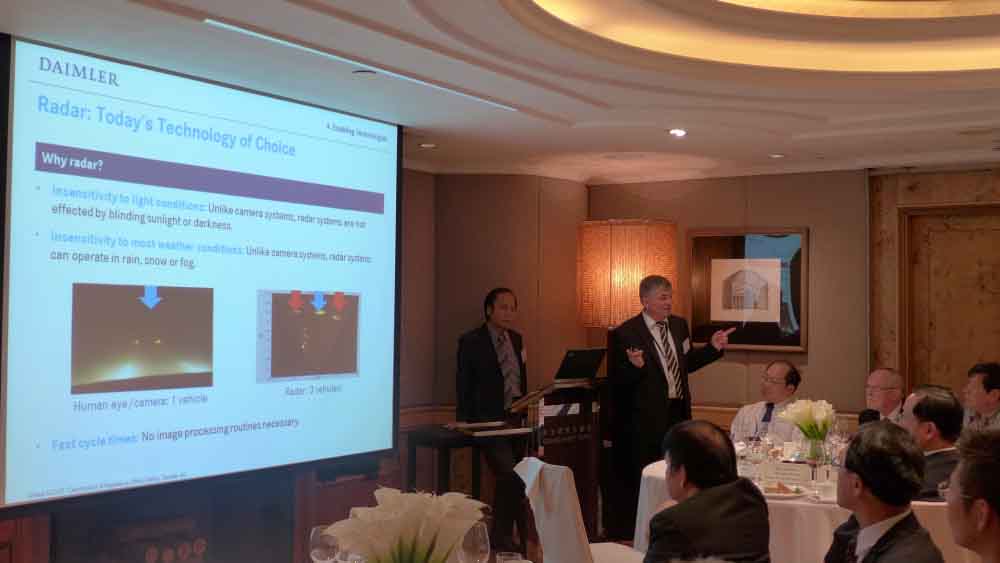Introduction to "Intelligent Drive"

The Intelligent Drive, as the name suggests, is an intelligent system that combines multiple technologies to make the driving experience safer. Prevention is better than cure and the primary focus of the Intelligent Drive system is to avoid danger and try to prevent collisions with other vehicles, people or objects. The next line of defence is to actively master difficult situations with the vehicle. When it is too late to prevent an accident, the system helps to mitigate the consequences of accidents for all road users.
The system includes active blind spot assistance, active lane keeping assistance and night view assistance.
The blind spot assist helps to avoid hitting cars in the blind spot by providing an optical warning when another vehicle enters the blind spot and an acoustic warning when driver actives the indicator when preparing to change lanes, thereby risking a side collision. The vehicle automatically brakes lightly on one side when the driver attempts a lane change and a side collision is imminent.
Lane keeping helps to keep the car within its current lane even on bends in the road by braking on one side of the vehicle when crossing solid or broken road lines, in cases of an imminent collision with parallel traffic, oncoming or passing vehicles. However, the driver can override the system by steering, braking or accelerating.
The intelligent drive has three integrated radar systems for short, medium and long distances (from 2cm up to 200 metres). The main advantage of radar as opposed to cameras is that it can detect objects even in poor visibility.
When other vehicles are dangerously close, a warning signal will go off to alert the driver. For the radar system to work, radio frequency spectrum in the 24 Gigahertz band needs to be released. This has been done in Europe, the United States, South Korea and Japan but not yet in Taiwan.
The system helps keep drivers a safe distance from other vehicles. It can also detect if a driver's hands are on the wheel and set off a warning signal if they are not. If a rear-end collision is imminent, a warning sound will automatically go off and passenger seats will automatically adjust for the optimal position to avoid whiplash, the car's brakes will automatically slow down the vehicle to prevent a collision with the vehicle in front.
The brake system is equipped with sensors that monitor objects and people outside the vehicle and identifies those that are in danger of colliding with the vehicle. The brake pressure is automatically adjusted to compensate for both the driver's excessive or insufficient pressure in order to bring the vehicle to a stop just before it hits the object and autonomous full braking is activated if the driver fails to react.
If the Intelligent Drive system is compromised due to malfunction or factors such as ice, fog or mud, it automatically shuts down and alerts the driver that the system is not working.
Statistics on vehicle accidents in Germany show that there has been a dramatic decline in accidents over the past 40 years, thanks to a slew of technological advances starting with the seatbelt in the early 1970s, anti-lock braking systems (ABS) in the late 1970s and air bags in the early 1980s. Now the limits of passive safety have been reached and the future is in driver-assisted safety features such as the "Intelligent Drive". According to simulations done (real tests would be too expensive), Mercedes Benz estimates that its system could reduce accidents by as much as 75%.
